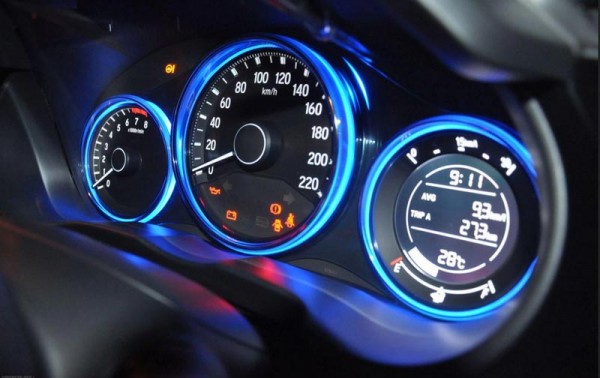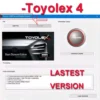No products in the cart.
Odometer Adjusment 2
WHAT IS AN ODOMETER ADJUSTMENT?
An odometer is a device that measures the distance traveled by a vehicle in miles or kilometers. It is an important component of a car as it helps to keep track of the vehicle’s mileage, which is useful for maintenance purposes and for determining the value of the vehicle when selling it. However, odometers can sometimes be adjusted to display a lower mileage, giving the illusion of a well-maintained vehicle with less wear and tear. This practice, known as odometer adjustment or “rolling back” the odometer, is illegal in most countries and is considered a form of fraud.
The process of odometer adjustment involves physically altering the odometer to display a lower mileage. This can be done through a variety of methods, including physically removing the odometer and turning the gears to decrease the reading, or by using electronic devices to change the reading on digital odometers. In some cases, odometer adjustment can also be performed by a mechanic or dealer when a vehicle is serviced or repaired.

There are several reasons why someone might choose to adjust their odometer. One of the most common reasons is to make a vehicle appear to be in better condition than it actually is, increasing its resale value. This is particularly common when selling a used car, as a lower mileage can make the vehicle appear to be well-maintained and less worn out, which can attract more potential buyers and result in a higher sales price.
Odometer adjustment is also sometimes performed by people who use their vehicles for personal purposes, but want to hide the actual amount of mileage they have driven. This is done to avoid having to pay higher insurance rates or to keep a vehicle’s warranty intact. However, this practice is not only illegal, but it can also result in significant financial losses for the vehicle owner if they are caught.
The consequences of odometer adjustment can be severe, both for the individual who committed the crime and for the buyer of the vehicle. In most countries, odometer fraud is considered a criminal offense and can result in fines, imprisonment, and a criminal record. The buyer of the vehicle can also suffer financial losses as a result of the adjusted odometer, as they may end up paying more for a vehicle with more wear and tear than they were led to believe.
In order to prevent odometer adjustment and protect consumers, there are several steps that can be taken. One of the most effective ways to detect odometer fraud is to have the vehicle inspected by a mechanic prior to purchase. A mechanic can perform a thorough inspection of the vehicle and its components to determine if there are any signs of tampering or wear and tear that would indicate a higher mileage than what is displayed on the odometer.
Another way to protect against odometer adjustment is to purchase a vehicle history report. A vehicle history report provides a comprehensive overview of the vehicle’s history, including its previous owners, accident history, and service records, which can help to uncover any potential odometer fraud
WHAT STATISTICS SHOWS
Odometer adjustment is a widespread problem that affects many countries around the world. The prevalence of odometer fraud varies from country to country, but it is a serious issue that has significant consequences for both consumers and the automotive industry. Unfortunately, there is limited data available on the exact number of vehicles that are affected by odometer adjustment, as many cases go unreported. However, several studies have been conducted to estimate the extent of the problem in various countries.
In the United States, odometer fraud is considered a federal crime and is regulated by the Federal Trade Commission (FTC). According to the FTC, odometer fraud affects an estimated 450,000 consumers each year, resulting in a total cost of over $1 billion in damages. The National Highway Traffic Safety Administration (NHTSA) also estimates that there are between 100,000 and 160,000 cases of odometer fraud in the US each year.
In the United Kingdom, a study conducted by the National Fraud Intelligence Bureau (NFIB) found that odometer adjustment is a significant problem, with an estimated 4,000 cases of odometer fraud being reported each year. The NFIB estimates that the total cost of odometer fraud in the UK is over £60 million annually.
In Australia, the Australian Competition and Consumer Commission (ACCC) has conducted research into the prevalence of odometer fraud. The ACCC estimates that up to 10% of used vehicles in Australia have had their odometers adjusted, resulting in a cost of over AUD 100 million each year.
In Canada, the Canadian Automobile Association (CAA) has also conducted research into the extent of odometer fraud. The CAA estimates that there are between 30,000 and 40,000 cases of odometer fraud in Canada each year, resulting in a cost of over CAD 100 million annually.
The exact extent of the problem varies from country to country, but it is estimated to result in significant financial losses for consumers and the automotive industry. It is important for consumers to be vigilant and take steps to protect themselves against odometer fraud, such as having a vehicle inspected prior to purchase and purchasing a vehicle history report.
In conclusion, odometer adjustment is a serious issue that can result in significant financial losses for both the buyer and the seller of a vehicle. It is important for consumers to be aware of the potential for odometer fraud and to take steps to protect themselves against it, such as having a vehicle inspected prior to purchase and purchasing a vehicle history report. By being vigilant and taking the necessary precautions, consumers can avoid becoming victims of odometer adjustment and protect themselves from financial losses.






Why can’t they make odometers that sync with server over the air? In that case tampering would be pointless as third party could check real mileage online…
Is odometer adjustment legal if i am swaping instrument cluster and i want to lower mileage to exisiting old one?